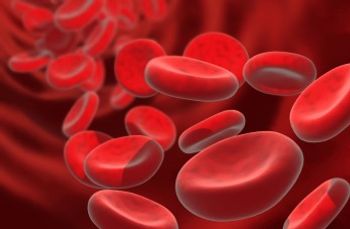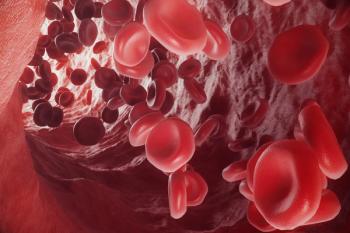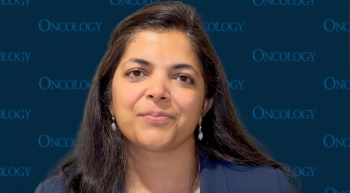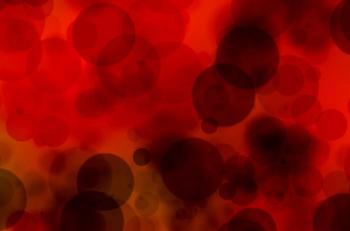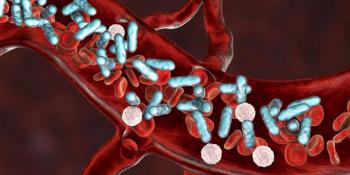
FDA Approves Belantamab Mafodotin in R/R Multiple Myeloma
Belantamab mafodotin has been approved for multiple myeloma, despite the FDA’s ODAC voting against the treatment due to ocular toxicities.
The FDA has approved belantamab mafodotin-blmf (Blenrep) plus bortezomib (Velcade) plus dexamethasone (BVd) for patients with multiple myeloma who have received at least 2 prior lines of therapy, according to a press release from the FDA.1
Data come from the phase 3 DREAMM 7 trial (NCT04246047), which evaluated BVd in patients with relapsed/refractory multiple myeloma.2
In November 2024, the FDA
In July 2025, the FDA’s Oncologic Drugs Advisory Committee (ODAC)
"Right now…CAR [chimeric antigen receptor] T and bispecific antibodies are resource-intensive therapies," said Surbhi Sidana, MD, an associate professor of medicine and lead of the Myeloma CAR-T/Immunotherapy Program at Stanford University in California, in an interview with CancerNetwork®. "Having [another] option, in the community, [to use] a highly effective drug [targeting] BCMA opens the BCMA option for these patients. For other patients who are candidates for CAR T and bispecific antibodies, this becomes an option at the time of relapse."
The ODAC Meeting
The ODAC panel, in a briefing, cited 2 major problems with both regimens: uncertainty regarding the proposed dosages and high rates of ocular toxicity.6
Currently, the proposed doses of belantamab mafodotin are 2.5 mg/kg of body weight via intravenous infusion every 3 weeks (DREAMM 7) and 2.5 mg/kg of body weight via intravenous infusion once in cycle 1 and then at 1.9 mg/kg every 4 weeks starting with cycle 2 (DREAMM 8; NCT06956170).
There were high rates of dose interruptions and reductions with the agent, with less than 50% of patients in each trial receiving the intended dose by cycle 3 of therapy. Additionally, there was limited exploration of the belantamab mafodotin dosage in both combinations, though it was noted that in the respective dose-finding trials—the phase 1/2 DREAMM 6 trial (NCT03544281) for BVd and the phase 1/2 ALGONQUIN trial (NCT03715478) for BPd—response rates were comparable and rates of ocular toxicity were lower with lower doses and longer treatment intervals of the agent.
It was also noted that treatment with belantamab mafodotin was associated with severe ocular toxicities such as corneal ulcers and a clinically significant decline in visual acuity.
At those dosages, high rates of ocular toxicities were observed in both trials. Per the sponsor’s Keratopathy and Visual Acuity (KVA) scale, any-grade KVA events occurred in 92% and 93% of patients in DREAMM 7 and DREAMM 8, respectively; grade 3 and 4 KVA events occurred in 77% and 78%.
Recurrent ocular toxicity events occurred in 70% and 72%, with a median of 3 grade 2 or higher KVA events; 58% and 57% of patients had ongoing KVA events at the data cutoff. At least 1 dose modification due to a KVA event occurred in 76% of patients in DREAMM 7 and 78% in DREAMM 8.
“The corneal toxicity seen with belantamab mafodotin is a unique risk to this product and is not seen with currently available therapies for [multiple myeloma],” wrote the ODAC panel.7 “These toxicity concerns, coupled with the high rates of dose modifications, raise concerns about whether the dosages evaluated in DREAMM 7 and DREAMM 8 have been adequately optimized.”
DREAMM 7
At the clinical data cutoff of October 2, 2023, the median progression-free survival (PFS) by independent review committee (IRC) with BVd was 36.6 months (95% CI, 28.4-not estimable [NE]) compared with 13.4 months (95% CI, 11.1-17.5) with the control arm (HR, 0.41; 95% CI, 0.31-0.53; P < .0001).
At interim analysis 2, with a clinical cutoff date of October 7, 2024, the median overall survival (OS) was NE (95% CI, NE-NE) with BVd compared with NE (95% CI, 41.0 months-NE) with control (HR, 0.58; 95% CI, 0.43-0.79; P = .0005).
Regarding safety, any treatment-emergent adverse effects (TEAEs) occurred in 100% of both trial arms, with grade 3 to 4 TEAEs occurring in 95% of the BVd arm and 76% of the control arm; grade 5 TEAEs occurred in 10% and 8%, respectively, and serious TEAEs occurred in 50% and 37%. Dose modification due to TEAEs occurred in 98% and 89%.
Patients in the DREAMM 7 trial were randomly assigned to receive either BVd or daratumumab plus bortezomib and dexamethasone. Eligible patients had relapsed/refractory multiple myeloma, had at least 1 prior line of therapy, and did not have intolerance or disease refractory to daratumumab or bortezomib.
The trial’s primary end point was PFS per IRC. Secondary end points included OS, duration of response, and minimal residual disease negativity.
DREAMM 8
At the clinical data cutoff of January 29, 2024, the median PFS by IRC with BPd was NE (95% CI, 20.6 months-NE) compared with 12.7 months (95% CI, 9.1-18.5) in the control arm (HR, 0.52; 95% CI, 0.37-0.73; P < .0001).7
At interim analysis 1, with a clinical cutoff date of January 29, 2024, the median OS was NE (95% CI, 33.0 months-NE) with BPd compared with NE (95% CI, 25.2-NE) with control (HR, 0.77; 95% CI, 0.53-1.14; P = .1896).
Regarding safety, any TEAE occurred in 99% of the BPd arm and 96% of the control arm, with grade 3 to 4 TEAEs occurring in 92% and 74%; grade 5 TEAEs occurred in 11% and 11%, respectively, and serious TEAEs occurred in 63% and 45%. Dose modification due to TEAEs occurred in 91% and 86%.
Patients in DREAMM 8 were randomly assigned to receive either BPd or pomalidomide plus bortezomib and dexamethasone. Eligible patients had relapsed/refractory multiple myeloma and received at least 1 prior line of therapy, including lenalidomide. Those with prior treatment with pomalidomide were excluded from trial participation.
The trial’s primary end point was PFS per IRC. Secondary end points included OS, duration of response, and minimal residual disease negativity.
References
- FDA approves belantamab mafodotin-blmf for relapsed or refractory multiple myeloma. FDA. October 23, 2025. Accessed October 23, 2025. https://tinyurl.com/uymt7x9b
- Mateos MV, Robak P, Hus M, et al. Results from the randomized phase III DREAMM-7 study of belantamab mafodotin (belamaf) + bortezomib, and dexamethasone (BVd) vs daratumumab, bortezomib, and dexamethasone (DVd) in relapsed/refractory multiple myeloma (RRMM). J Clin Oncol. 2024;42(suppl 36):439572. doi:10.1200/JCO.2024.42.36_suppl.439572
- Blenrep combinations accepted for review by the US FDA for the treatment of relapsed/refractory multiple myeloma. News release. GSK. November 25, 2024. Accessed July 21, 2025. https://tinyurl.com/4wjtdf3t
- July 17, 2025 Oncologic Drugs Advisory Committee (ODAC). FDA. July 17, 2025. Accessed July 21, 2025. https://tinyurl.com/mhafuuy8
- GSK announces extension of US Food and Drug Administration review period for Blenrep (belantamab mafodotin-blmf) in relapsed/refractory multiple myeloma. News release. GSK. July 23, 2025. Accessed October 22, 2025. https://tinyurl.com/67acsruy
- FDA Briefing Document: BLA 761440. FDA. July 17, 2025. Accessed July 21, 2025. https://tinyurl.com/mrxd9nc5
- Trudel S, Beksac M, Pour L, et al. DREAMM-8 study of belantamab mafodotin plus pomalidomide and dexamethasone (BPd) vs pomalidomide plus bortezomib and dexamethasone (PVd) in relapsed/refractory multiple myeloma (RRMM): a subgroup analysis in patients with high-risk cytogenetic features. J Clin Oncol. 2025;43(suppl 16):7533. doi:10.1200/JCO.2025.43.16_suppl.7533
Newsletter
Stay up to date on recent advances in the multidisciplinary approach to cancer.


